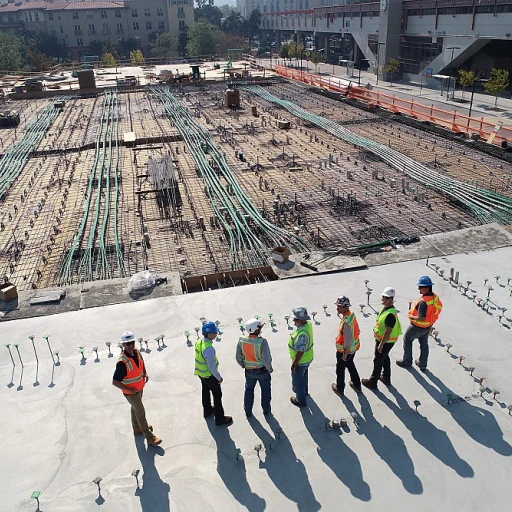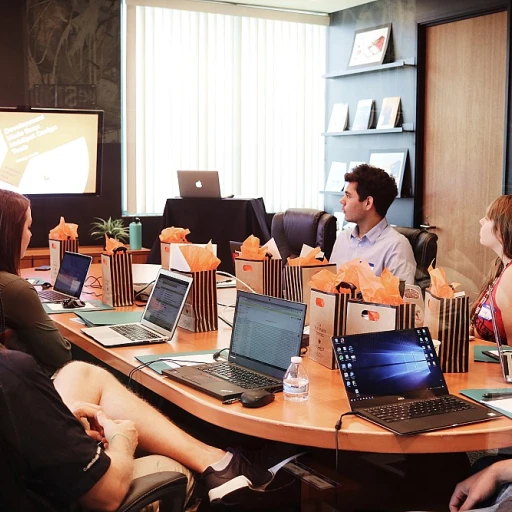
Understanding the Role of Teamwork in Succession Planning
Team Dynamics in Succession Planning
In the realm of succession planning, understanding the dynamics of teamwork is pivotal. This strategy ensures seamless transitions and continuity in leadership by fostering a collaborative environment. Recognizing the team members who contribute to a high-performing group is essential for a successful succession plan. Teamwork, when integrated into succession planning, provides numerous benefits. For one, it emphasizes open communication, which is foundational in building trust among team members. A team-oriented strategy bolsters a culture where each employee feels valued, increasing job satisfaction and engagement. Moreover, decision making becomes a shared process. Through collaboration, employees are more likely to align with the company’s goals and vision, enhancing the overall workplace culture. As team members bring diverse ideas to the table, problem solving becomes more effective, ensuring that outcomes are well-rounded and beneficial for the organization. According to experts from Russell Reynolds Associates, a teamwork-oriented approach is not only about sharing responsibilities; it also involves creating an environment where trust and teamwork are at the forefront. This culture of teamwork creates a foundation that nurtures talent, preparing teams for any leadership changes that may come their way. For more insights on navigating this complex landscape, you can visit the expert's resource. In fostering an oriented culture that emphasizes teamwork, organizations build a robust framework for succession planning, ultimately leading to smoother transitions and more stable leadership outcomes.Identifying Key Players for a Teamwork-Oriented Strategy
Pinpointing the Essential Team Members
When adopting a teamwork-oriented approach to succession planning, it is crucial to identify key players who can contribute to this strategy. This involves recognizing team members who possess strong leadership potential, as well as those who exhibit the ability to collaborate effectively within a team environment.
Start by evaluating employees who have consistently demonstrated high levels of job satisfaction and employee engagement. These individuals are likely to be invested in the company culture and exhibit traits of being a team player, making them valuable assets in a succession plan.
Additionally, consider employees who excel in problem-solving and decision-making. Their ability to navigate complex scenarios and contribute diverse ideas can be instrumental in avoiding potential pitfalls during leadership transitions.
Once you have identified these key players, it is important to foster a culture of trust and open communication. This helps to ensure that all team members feel comfortable sharing their perspectives and collaborating towards common goals. Such a culture teamwork approach not only enhances the company’s succession planning efforts but also contributes to the development of a high-performing, team-oriented workplace.
Another essential aspect is understanding the role of headhunters in aligning external and internal talent with the organization's succession needs, thereby ensuring a well-rounded strategy.
Building a Collaborative Culture for Seamless Transitions
Creating a Unified Workplace Culture for Seamless Transitions
Building a collaborative environment within an organization is not only about sharing tasks but fostering a deep sense of trust and communication among team members. Such a culture is pivotal for ensuring seamless transitions during succession planning. Achieving this involves several strategies that encourage teams to work cohesively and support one another during change. Collaboration in succession planning should be ingrained in the workplace culture. Encouraging a team-oriented mindset can lead to high levels of employee engagement and job satisfaction. When team members feel valued and part of decision-making processes, they are more likely to contribute positively and adapt to leadership transitions with less friction. To successfully build an environment of trust, organizations should focus on open communication as a cornerstone. This creates an atmosphere where ideas can be freely exchanged, leading to effective teamwork and innovative problem solving. Transparency in sharing succession plans and leadership development paths is vital in gaining the trust team members need to commit to overarching goals. Steps to Building a Collaborative Culture:- Promote team building activities that strengthen relationships and enhance team player qualities among employees.
- Implement a culture of regular feedback, ensuring team members can express their views and feel heard in the workplace.
- Foster a team-focused environment through training programs that reinforce the benefits of teamwork and collective goal achievement.
- Encourage leaders to model effective communication and collaboration, setting the standard for their teams.
- Provide opportunities for joint problem solving, allowing employees to work together to overcome challenges and drive collective success.
Training and Development: Preparing Teams for Leadership Changes
Empowering Teams Through Skill Development
In a succession planning strategy that emphasizes teamwork, investing in training and development proves crucial. A strong focus is placed on equipping team members with the skills and knowledge needed to ensure seamless leadership transitions. This preparation enhances the collective ability of teams to address the challenges that often accompany change in leadership. Enabling team-oriented leadership involves fostering an environment where skills are not only shared but also continually honed. By prioritizing employee development, organizations can build teams well prepared for the evolving demands of leadership roles. The benefits of team building exercises and professional development workshops extend beyond individual growth, contributing to a culture of effective teamwork where problem-solving becomes a collective effort. Such a learning environment encourages open communication, which is a key component of building trust among team members. When employees feel supported in their professional growth, job satisfaction and engagement levels rise. This team-focused approach not only boosts self-esteem among team members but also enhances the organization's overall performance by creating high-performing teams. Furthermore, building a robust company culture that values collaboration over individual achievement can pave the way for more efficient decision-making processes. In a teamwork workplace, the continuous development of team members fosters resilience and improves the organization’s agility in aligning with its strategic objectives. Team-oriented development is a cornerstone for nurturing a supportive culture, building trust, and ensuring that all employees are prepared to step up when it's their turn to lead.Communication: The Backbone of Teamwork in Succession Planning
Promoting Transparency and Building Trust
Effective communication serves as the backbone of teamwork in the context of succession planning. A transparent flow of information not only facilitates seamless transitions but also builds trust among team members. When employees are kept informed about upcoming leadership changes and the rationale behind these decisions, they are more likely to feel valued and engaged. This engagement fosters a team-oriented culture where everyone feels like a key player in the process.Encouraging Open Dialogue
An environment that promotes open communication allows team members to share their ideas, concerns, and potential solutions. By facilitating open dialogue, companies encourage team building and collaboration. This approach enhances the effectiveness of teamwork, promoting an oriented leadership style where decision making becomes a collective effort. Encouraging open dialogue helps in problem solving by building trust and nurturing a culture of high-performing teams.Fostering a Culture of Feedback
Building a culture of feedback is essential in creating a teamwork workplace. Regular feedback sessions not only help in aligning goals and expectations but also promote continuous improvement. When feedback becomes part of the company culture, team members are encouraged to work on their strengths and contribute to the team's overall success. This practice of giving and receiving feedback enhances job satisfaction and fosters employee engagement.Benefiting from Diverse Perspectives
Diverse teams bring in a wealth of perspectives crucial for a successful succession planning strategy. Promoting a culture where every team member feels comfortable sharing their insights leads to innovative solutions and refined strategies. This not only benefits the company but also enhances the sense of belonging among employees, reinforcing the team's focus on achieving common goals. Leveraging diverse perspectives in working environments ensures a well-rounded approach to leadership transitions.Measuring Success: Evaluating the Impact of a Teamwork-Oriented Approach
Assessing the Effectiveness through Concrete Parameters
To truly understand whether a teamwork-oriented approach to succession planning is working, it's essential to evaluate its impact using concrete metrics and parameters. Succession planning is a critical process, and its effectiveness can greatly benefit from a structured assessment strategy. Here are some key aspects to consider:- Employee Engagement & Job Satisfaction: Monitor the levels of employee engagement and job satisfaction as indicators of how well team dynamics are responding to changes in leadership. High levels of engagement and satisfaction often reflect a healthy, collaboration-focused environment.
- Team Performance Metrics: Measure the performance of high-performing teams within your organization. Improvements in team metrics, such as productivity and project completion rates, can be a sign that a teamwork-oriented succession strategy is fostering a positive and effective working culture.
- Leadership Effectiveness: Evaluate the effectiveness of new leaders who have emerged through this approach. Successful leadership transitions can be identified by goal accomplishment, strong communication, and the ability to build trust with team members.
- Problem Solving & Decision Making: Assess how well team members collaborate on problem solving and decision making. A teamwork-driven approach should ideally lead to more innovative ideas and better decision outcomes, indicating a robust culture of teamwork.
- Open Communication Channels: Gauge how open and transparent communication is within the teams. Effective teamwork largely hinges on open communication, which allows ideas to flow freely and helps teams adapt more efficiently during leadership transitions.












